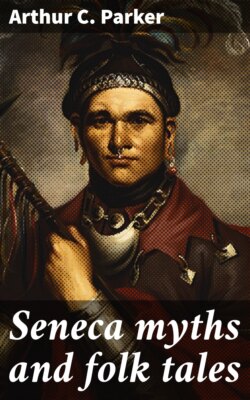Читать книгу Seneca myths and folk tales - Arthur C. Parker - Страница 10
На сайте Литреса книга снята с продажи.
OBTAINING CORRECT VERSIONS.
ОглавлениеTable of Contents
It might be supposed that myths and folk-tales which are orally transmitted would suffer great changes as they pass from one story teller to another, and that in time a given tale would become utterly corrupted, and indeed so changed that it would bear faint resemblance to the “original.” Yet, an examination of the myths and legends recorded by early observers, as the early missionaries, show that the modern versions have suffered no essential change. An excellent example is the Iroquoian creation myth, as recorded by the Jesuit fathers in the Relations.
Religious traditions, ceremonies and myths, being of a “sacred” character, must be related with a certain fidelity which forbids any real change in the content. To a lesser degree, perhaps, but not much less, the “gă´gāā” legends of the Iroquois are protected from violent alteration. The legend is a thing, to the Indian mind, and it has a certain personality. In certain instances the legend is a personal or group possession and its form and content are religiously guarded from change. With tales told for mere amusement, tales belonging to the class of mere fiction, greater liberties may be taken.
Notwithstanding all this, it is certain that there are several versions of each legend. Certain groups tell the myth or legend in different ways. There are short versions and long versions and there are Seneca versions and Mohawk versions. In order to ascertain the “correct version” we must examine several versions as related by different narrators, and then after making an outline of the episodes, the characters and the motives, determine what the central theme of all is. We can in this manner judge what is essential and what is non-essential.
There is a wide variation in the language used in the narration of some legends, just as there is in the relation of modern stories told over the banquet table. A better example of variation, is to consider the innumerable versions of common nursery stories, as Puss in Boots, Cinderella, or Aladdin’s Lamp. Yet the theme of the story and the episodes, to say nothing of the characters, remain unchanged. Just so with most Iroquois folk-lore, much depends upon the author-raconteur. Some will add explanatory matter, some will add picturesque descriptions, some will add an abundance of conversation, and some will expand on the emotions of the characters. There is a wide individual variation in these matters, and much depends upon the training and education of the narrator, as well as upon his temperament. Language may differ somewhat, but the theme must remain,—the real story must never suffer essential change.
